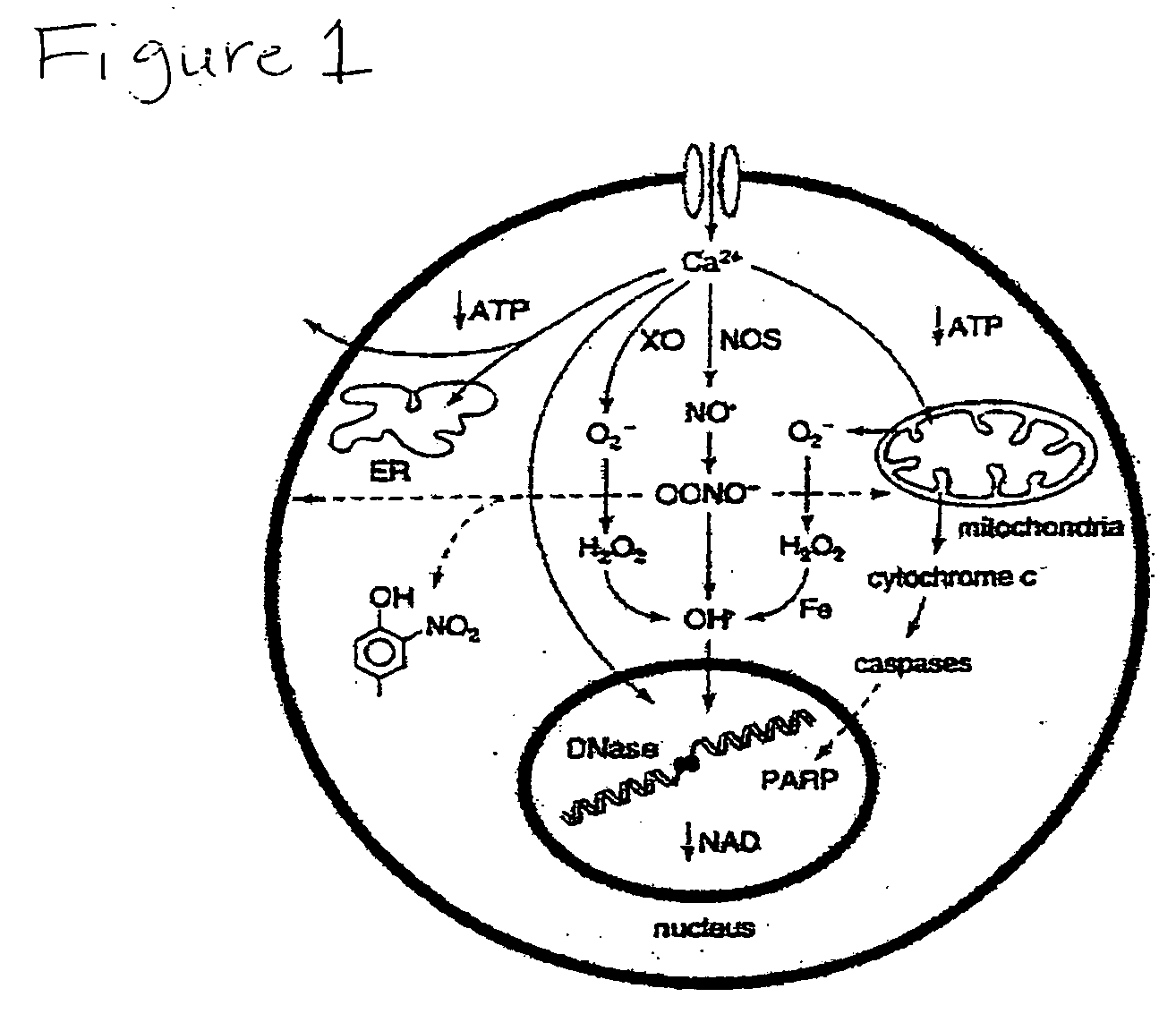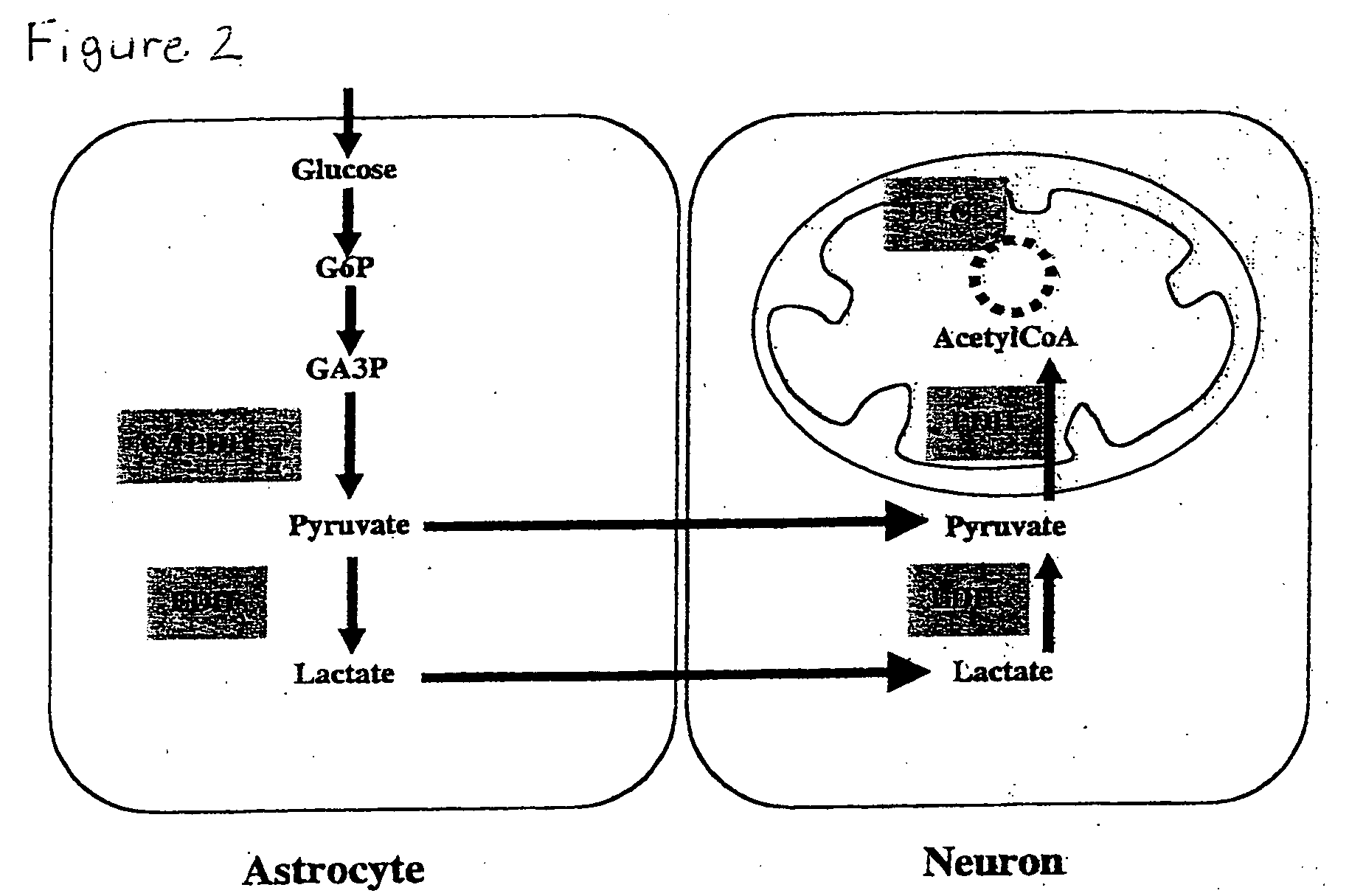Cellular phosphorylation potential enhancing compositions preparation and use thereof
a phosphorylation potential and composition technology, applied in the field of cell biology, neurology, immunology, physiology and medicine, can solve the problems of cellular calcium overload, oxidative stress, and calcium overload inside cells, and achieve the effect of effective brain nutrient delivery, rapid consumption of all cells, and increased brain nad and creatine levels
- Summary
- Abstract
- Description
- Claims
- Application Information
AI Technical Summary
Benefits of technology
Problems solved by technology
Method used
Image
Examples
Embodiment Construction
[0043] The following examples are intended to be illustrative of Applicants' invention and do not impose any limitations theron.
[0044] Applicants have discovered a novel, rational, energy metabolism-based treatment for acute and chronic brain afflications using safe, endogenously occurring compounds that can potentially provide neuroprotection against several of the injury mechanisms implicated in neuronal death and degeneration. To further illustrate our invention that simple nutrients can prevent neurotoxicity, we have performed in vitro experiments using cultured neuronal cells subjected to cell killing by reactive oxygen species, calcium overload, and glutamate, the three most commonly sited pathologic events in neurotoxicity. We used the rat hypothalamic neuronal cell line GT1-7 and performed cell killing experiments to determine the dose of hydrogen peroxide just sufficient to kill all cells over a 24 h period of exposure. To study calcium overload toxicity, we treated cells w...
PUM
| Property | Measurement | Unit |
|---|---|---|
| physical endurance | aaaaa | aaaaa |
| bioactive | aaaaa | aaaaa |
| energy | aaaaa | aaaaa |
Abstract
Description
Claims
Application Information
 Login to View More
Login to View More - R&D
- Intellectual Property
- Life Sciences
- Materials
- Tech Scout
- Unparalleled Data Quality
- Higher Quality Content
- 60% Fewer Hallucinations
Browse by: Latest US Patents, China's latest patents, Technical Efficacy Thesaurus, Application Domain, Technology Topic, Popular Technical Reports.
© 2025 PatSnap. All rights reserved.Legal|Privacy policy|Modern Slavery Act Transparency Statement|Sitemap|About US| Contact US: help@patsnap.com



